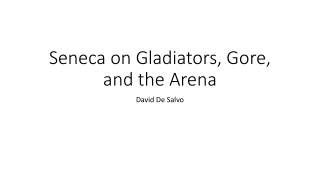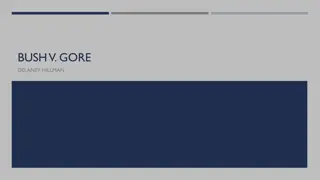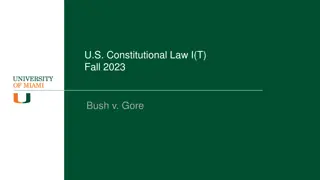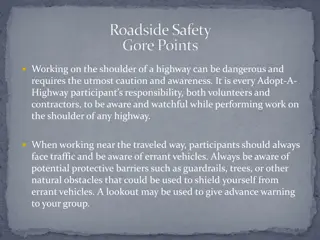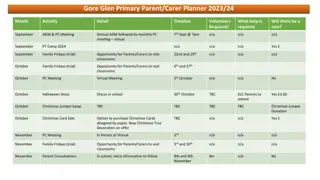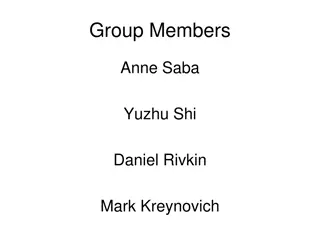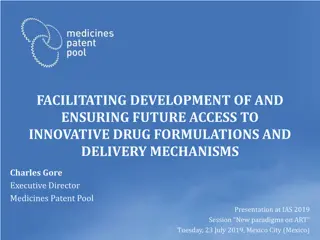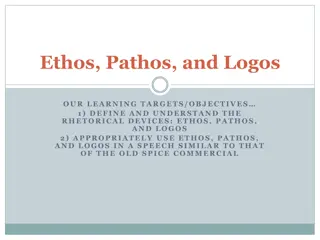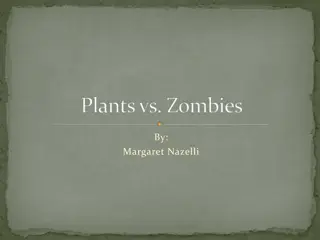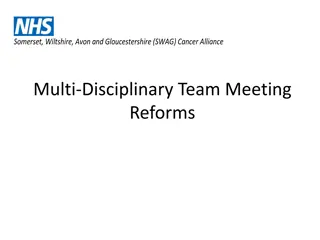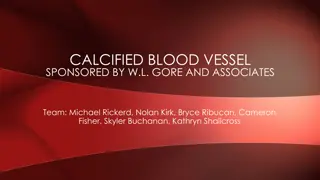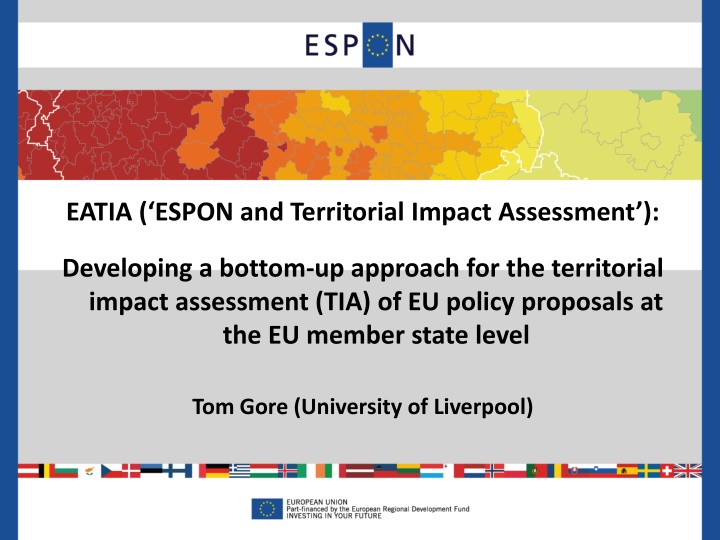
Developing a Bottom-Up Approach for Territorial Impact Assessment - EATIA Project
"Learn about the EATIA project, focusing on developing a bottom-up approach for territorial impact assessment of EU policy proposals at the member state level. Explore the project's background, objectives, methodological approach, TIA framework, and the overall process in implementing this innovative approach."
Download Presentation

Please find below an Image/Link to download the presentation.
The content on the website is provided AS IS for your information and personal use only. It may not be sold, licensed, or shared on other websites without obtaining consent from the author. If you encounter any issues during the download, it is possible that the publisher has removed the file from their server.
You are allowed to download the files provided on this website for personal or commercial use, subject to the condition that they are used lawfully. All files are the property of their respective owners.
The content on the website is provided AS IS for your information and personal use only. It may not be sold, licensed, or shared on other websites without obtaining consent from the author.
E N D
Presentation Transcript
EATIA (ESPON and Territorial Impact Assessment): Developing a bottom-up approach for the territorial impact assessment (TIA) of EU policy proposals at the EU member state level Tom Gore (University of Liverpool)
Structure 1. Background to the project 2. Summary of the TIA approach developed 3. Experiences from testing the approach and next steps
Background The EATIA project is classified as a targeted analysis , so has been driven by a specific stakeholder demand. It has been initiated by stakeholders in the UK, Slovenia and Portugal. Four main criteria for the development of a suitable TIA approach: Simple, pragmatic and policy-maker friendly TIA approach; Flexible and sensitive to different member state contexts; Should complement existing member state arrangements/procedures; Should not lead to new formal assessment obligations, as, for instance, with strategic environmental assessment (SEA) or environmental impact assessment (EIA).
The EATIA project Five objectives: 1. To establish the differences and similarities of assessment tools (RIA, SEA, EIA, TIA, rural proofing, etc) 2. To design a TIA framework 3. To test the applicability of the TIA framework 4. To assess the usefulness and benefits of the framework 5. To draw conclusions and recommendations
The methodological approach Interactive learning networks Groups of policy-maker and planning practitioners established in each of the stakeholder countries (UK, PT and SI) (15-20 members). Consulted throughout the project: - 3 parallel workshop sessions (January 2011, May 2011, March 2012) - 2-3 testing workshops (December January 2012) - Communicated informally between workshops sessions A point of contact between the project team and potential end-users of the approach
The TIA framework The framework has been built around three core elements: 1. Process: The main procedural stages of the framework a) Screening b) Scoping c) Assessment d) Evaluation Sub-units 2. Methods: The techniques applied in each stage of the process - matrices, checklists, logical chains. 3. Governance: How the methodological aspects of the framework can be operationalised in practice.
The approach/framework in brief Screening: Aims to determine on a case-by-case basis, whether a TIA should be carried out. It is likely to be particularly desirable if unintended / adverse impacts are considered likely. 2 supporting techniques that could facilitate this process: 1. Logical chain approach: a form of brainstorming that can be used to identify potential policy impacts 2. Checklist: ensures that impacts are systematically considered on important territorial characteristics (e.g. employment, economic development, biodiversity, etc) to ensure that no important impacts are overlooked. Logical chain Other sources of information, e.g. Outputs Commission s Impact Assessment procedure.
The approach a summary/overview Scoping: Scoping checklist Major impact at the national or local level? Yes ( ), no (x), uncertain (?) Aims to steer the TIA process (less flexible) Policy or policy elements Location/ features of areas likely to be affected? Criterion Comments Two main activities: Policy element A: Emergenc y planning Economic developme nt 1. Preliminary identification of potential impacts, building of any work done in screening Employme nt Poverty 2. Identification of the characteristics of areas likely subject to these impacts (considering e.g. geographic location, presence of a particular resource or activity) Cont .... Leads to the development of an Impact Assessment Matrix (IAM) which structures the Assessment Stage and the identification of specific sub- national localities to conduct the assessment.
The approach a summary Assessment: Impact Assessment Matrix Criterion Nature of impact Policy ....... Aims to predict impacts (regional or local level) Magnitude (0, 1, 2) Orientation against baseline (increase or decrease?) Temporal distribution (Short term, medium term, long term?) Undertaken by completing the Impact Assessment Matrix: Employment Comments and justification Specifies the types of impacts (e.g. employment, soil pollution, economic growth) that should be considered. Magnitude (0, 1, 2) Orientation against baseline (increase or decrease?) Temporal distribution (Short term, medium term, long term?) Comments and justification Economic development Magnitude (0,1, 2) Orientation (increase or decrease) Temporal distribution (short term, medium term, long term) 3 Impact characteristics Cont ..... Ideally, should be completed in a participatory setting in light of available sources of information (outputs of the screening and scoping stages and also locally available information).
The approach a summary Evaluation: Impact Evaluation Table Impact significance? (-2, -1, 0, +1, +2) Policy objectives Justification Aims to determine what the impacts mean for a member state OBJECTIVE 1 2 activities: OBJECTIVE ..... 1. Amalgamation and synthesis of the outputs of the sub-national assessment stage (e.g. charts, thematic mapping) 2. Evaluation of the identified impacts, in terms of member state policy objectives/aspirations framed in policy documents. Undertaken using an Evaluation Table, which structures this process. The evaluation helps member states determine whether actions need to be taken to mitigate or promote impacts.
Reflections/Experiences So far our experiences suggest that: 1. A TIA could theoretically take as little as 2-3 days to complete, provided that the right resources are available. 2. Practitioners generally find the approach straightforward to apply. Although there would be some training requirements if the approach is to be implemented. 3. Different potentials exist in different member states to implement the approach in a pain-free way. Member states that already carry out RIAs of EU measures may find it easier to implement than those that don't. 4. One of the biggest barriers to the approach could be the reluctance of sub- national authorities to actually participate in the process (e.g. limited resources) - they may not see TIA as a priority.
Next steps? 1. Further testing of the approach (outside of the scope of the project): Other member states Real-time policy development process (so far only applied to adopted policies). 2. A web-based platform to operationalise the approach? Electronic matrices / checklists, alert mechanisms, etc Facilitate the management of the procedure

